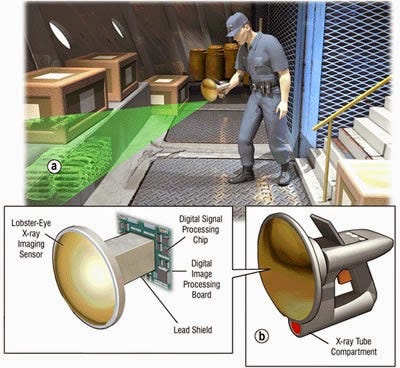Police are using Doppler radar to spy on you in your home

CO - Denver police usage of Doppler radar to detect whether someone is in a house could raise "grave Fourth Amendment questions," the 10th Circuit ruled Tuesday.
The case stems from the hunt by police for Kansas parolee Steven Denson. After Denson had stopped checking in with his probation officer while on release from a sentence for armed robbery, police used a utility bill to track him down and search his home.
Though Denson pleaded guilty to illegal possession of firearms, he preserved his right to appeal claims that the entry and search of his home were unlawful.
The 10th Circuit sided with the government but it acknowledged that the government's use of a Doppler radar device to detect whether someone was in the house was problematic.
Writing for the three-judge panel, Judge Neil Gorsuch noted that the cases forces the court confront, though not resolve fully, "how the Fourth Amendment interacts with the government's use of radar technology to peer inside a suspect's home."
Ultimately, the 10th Circuit found that, even without the Doppler reading, other evidence such as a high-electricity reading coming from the house, the suspect's unemployment and the early time of day established reason enough to assume his presence.
The Doppler radar device is capable of detecting from outside the home the presence of human breathing and movement within.”
Radar devices like LEXID shown above & EMMDAR & Range-R can spy on you through walls.
The National Institute of Justice (NIJ) is sponsoring AKELA a high performance, portable, see-through-the-wall imaging system. Click here to find out more about AKELA and here to read the NIJ's program.
The NIJ should be called DHS, see here, here and here.
The govt. (read DHS) contended that it was entitled to a "protective sweep" to ensure no one else was present in the house, especially since Denson's roommate had an outstanding warrant.
Though the Doppler reading detected the presence of only one person, the court noted that there are factors to determine if that negates the need for a search.
"How far inside the structure could the radar see?" Gorsuch wrote. "Could the device search the whole house and allow officers to be sure that they had located every person present? Could it distinguish between one person and several? We just don't know."
"We have little doubt that the radar device deployed here will soon generate many questions for this court and others," he wrote. "New technologies bring with them not only new opportunities for law enforcement to catch criminals, but also new risks for abuse and new ways to invade constitutional rights."
http://www.courthousenews.com/2014/12/31/police-radar-carries-risk-of-abuse-court-says.htm
http://www.washingtonpost.com/news/volokh-conspiracy/wp/2014/12/30/judge-gorsuch-on-arrrest-warrants-and-doppler-radar-devices/


